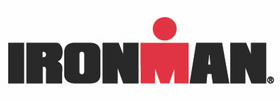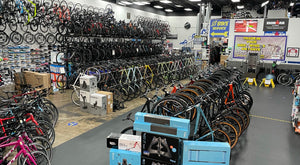
How do you hydrate while training?
How do I stay hydrated while training?
Hydration is an important topic to keep at the front of your mind during your training no matter what time of the year. It is important both for performance and for your body’s ability to fight disease and function properly. Here are Playtri we have over 20 years of experience doing performance testing such as Sweat Testing and working with athletes to help determine how much they should drink during training and how much sodium they should consume. Still, any conversation about how to stay hydrated while training needs to start with daily hydration practices.
Simply stated, there is a large number of people in our society who are living in a dehydrated state. As Playtri coaches we encourage our athletes to stay hydrated throughout the day by always having a cup or water bottle that they sip from regularly. We want to be drinking enough water (although some coffee or tea is okay) so that our urine color is clear or mild yellow and we are urinating every few hours. Anecdotally, I have worked with many athletes who have seen drastic improvements in their sports performance just from adopting a strong daily hydration practice. And when we are dehydrated our athletic performance is impacted. Anybody water loss over 2% can have a dire impact on our performance ranging from a reduction in maximal aerobic power and endurance to chills (ever feel cold while training in hot conditions?) to collapse and potential cardiogenic shock.
If we do not have good hydration practices on a day-to-day basis, then we are setting ourselves up for poor training. And if we are already dehydrated when we start training then we are more likely to experience some of the more drastic effects of dehydration. If possible, begin consuming 8-24 ounces of water with some sodium roughly 4 hours before your training session and then 4-12 ounces with some sodium about 2 hours beforehand. This is particularly concerning for athletes who wake up at 5:00 for a 5:30 workout. Although early morning workouts are the staple of many age group athletes, we need to recognize that we start those workouts in a malnourished and dehydrated state since we have refrained from food and drink for 6-8 hours.
If you are dehydrated when you start your training, then you're “during” hydration becomes that much more important. But if you come into your training hydrated, then the most accurate answer to how to stay hydrated is: “It depends on… because everybody is different.” How much sodium you consume for every 32 ounces of water can easily be determined through an Advanced Sweat Test. However how much water you drink during your training is impacted by the environment (temperature, humidity, and altitude), sweat rate, and duration/intensity. Please note that these factors are also present during winter training: cold temperatures and low humidity can be just as hard on the body as high heat and humidity, for example. Still, general guidelines are that you will likely drink somewhere between 12-32 oz of water (with electrolytes) per hour during your training. The hotter and/or more humid it is, the more water you will likely need to consume.
When we work with an athlete to start to dial in their hydration practices, we give them this guidance. If your workout is less than 45-60 minutes and is in temperatures below 60 degrees Fahrenheit, you likely will not need water or sodium. If your workout is less than 2 hours and is in temps below 60 degrees, you will likely be okay with just water. For workouts below 60 degrees and longer than 2 hours, you will need water and sodium.
If your workout is less than 45-60 minutes and the temperature is 60-80 degrees F, you likely will need to bring water along and drink as desired. For any workout in this temperature range above 60 minutes, you will need water and sodium.
And any workout in temperatures above 80 degrees, no matter the duration, we highly recommend that you drink water and sodium.
The best way to determine how to stay hydrated during your training is to do the following: Adopt a healthy daily hydration practice, get an Advanced Sweat Test, and document how much water and sodium you consume during your training and the conditions in which you are training. Healthy daily hydration practices and an advanced sweat test eliminate the guesswork around two-thirds of hydration while having a historical record to look back on with your coach helps eliminate most of the rest.
If you have any questions about anything in this article or would like to know more about our different coaching options, please contact me at jim.rowe@playtri.com. Happy training and racing!
Jim Rowe is a Playtri Level 4 Coach and Coach Education Lead, a USAT LI Certified Coach, an NASM Certified Personal Trainer, and an Ironman and 70.3 World Championship Qualifier who works with adult athletes of all abilities from beginners to IRONMAN World Championship qualifiers. Learn more about Jim at www.playtri.com/jim-rowe



